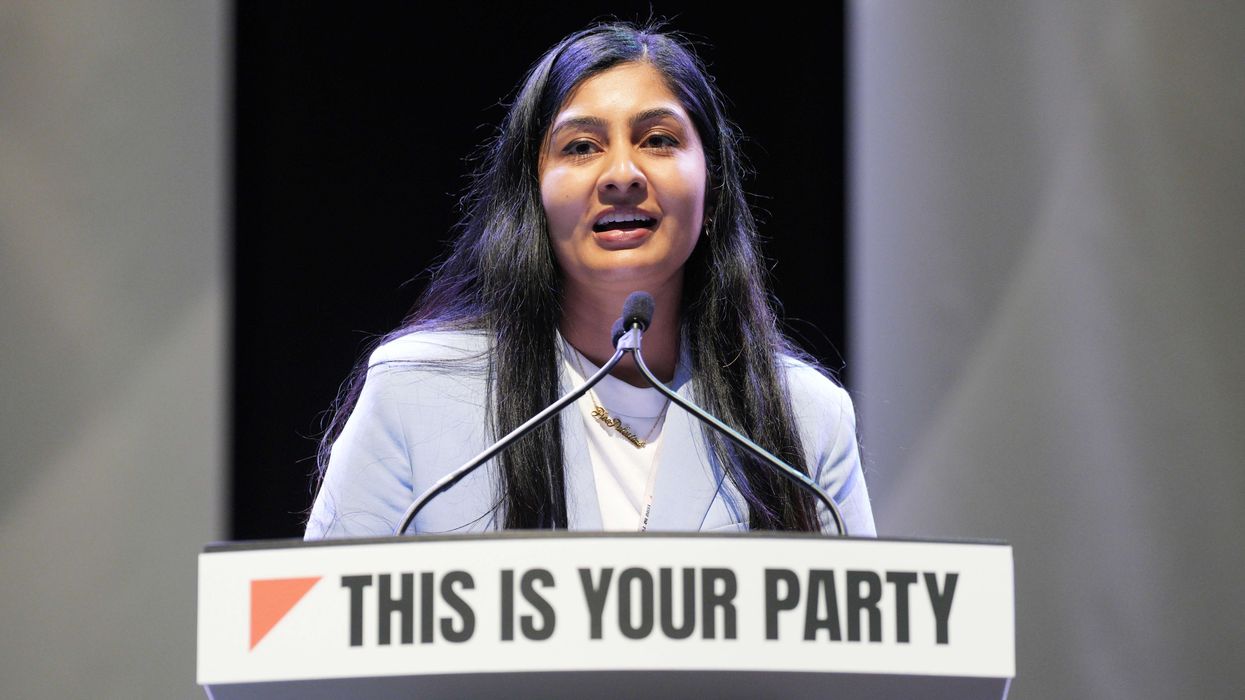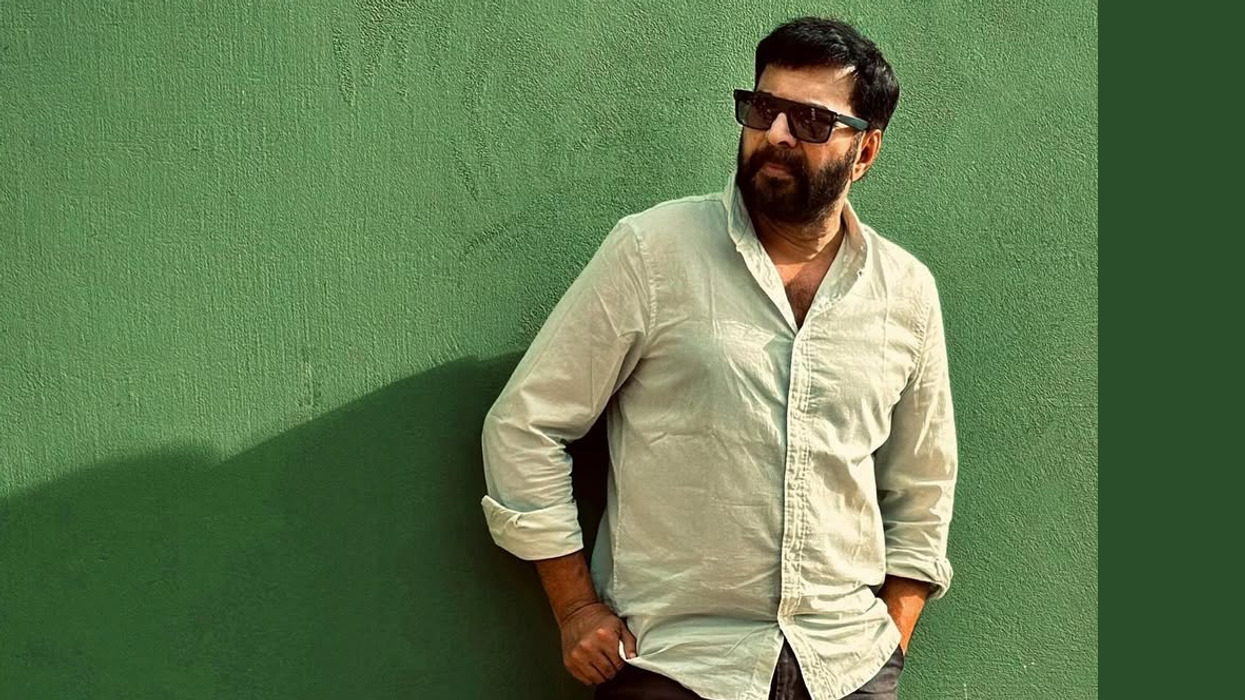IF YOU’RE looking for a success story a little different to the rest, Jay Shetty’s rise to stardom is a safe bet.
The motivational speaker has become a worldwide sensation in a matter of years, thanks to his take on mindfulness and wellbeing. Shetty, a former monk, is typically regarded as one of the most influential social media stars on the planet.
Even at a glance, the 33-year-old’s popularity is a sight to behold.
Shetty’s social media following total more than 35 million and his daily videos have amassed more than seven billion views. His podcast, On Purpose, which has seen him interview a number of celebrities, including the late basketball player Kobe Bryant, reality TV star Khloe Kardashian and musician Alicia Keys, has had more than 64 million downloads.
Speaking to the GG2 Power List, Shetty admits he never expected the level of success he has achieved. “I never imagined that this would ever happen,” he smiles. “I thought I’d make videos in the evenings and weekends, and go to my day job and do this as a hobby on the side, because I loved and believed in it. So the fact that it’s got to this level, to be honest, I just live in gratitude because I never expected it.”
Hailing from north London, the entrepreneur had a fairly uneventful childhood with his parents and younger sister. Shetty, who is from a British-Indian background, attended a prestigious grammar school in High Barnet and was a good student.
In his late teens, however, life unravelled slightly for Shetty. He began to mix with the wrong crowd, experimenting with drugs and alcohol. Suspended from school three times, he was eventually threatened with expulsion.
Given a second chance, Shetty promised to clean up his act, and he turned a corner. In college, he began to realise the value of hard work and discipline. But it was in his first year of university at Cass Business School that his life changed when he attended a talk by a monk called Gauranga Das. Shetty admitted he was not particularly interested in the event – it was a friend who forced him to accompany him.
Little did Shetty know that the course of his life would change forever.
Das revealed that he had given up an opportunity to study at the Indian Institute of Technology (IIT) Bombay – one of India’s most prestigious institutes – to pursue a life of mindfulness and spirituality. Shetty said he was fascinated by his story, admitting he didn’t believe he had ever met anyone who was truly happy until he saw Das.
When he approached the monk after the talk, Das told him he would be travelling around the UK on a speaking tour and Shetty was welcome to attend. Without hesitation, Shetty agreed.
Years later, and still intrigued by the monk’s way of life, Shetty joined an ashram in Mumbai. He shaved his head, slept on the floor, studied ancient Indian scriptures and meditated for hours each day. He spent three years in the ashram before returning to the UK.
When he returned, Shetty admitted it was one of the toughest periods of his life. He spent his time at home, despairing over his decision.
It was the closest he had ever felt to being depressed, he revealed.
Eventually, Shetty got a job offer at a global consultancy film. Although he considered himself as a ‘former’ monk, Shetty said he still applied the wisdom he had learnt to his everyday life. He started to make mindfulness videos on mental health, purpose and wellbeing in his spare time.
The Huffington Post came across the content and showed interest in them – which became the starting point for Shetty’s multi-million pound mindfulness empire. The popularity of his videos soared, racking up thousands of views. In 2018, one of his videos was named the most viewed on Facebook.
And despite the coronavirus outbreak, Shetty can still count 2020 as a successful year. His book, Think like a Monk, was released in September and quickly became an international bestseller. It draws upon guidance and wisdom from Shetty, referring to his experiences in the ashram. It offers a variety of advice, including how to overcome negative thoughts and habits, reduce stress and improve focus.
“When I wrote the book, my goal was to really help people train their mind for peace and purpose every day,” he explains. “I can’t think of a more significant time where we all are seeking peace and purpose in different areas of our life. My goal with this book is that it helps people find calm in the chaos, and (brings them) peace and purpose in their lives.”
Although Shetty now permanently resides in Los Angeles, he still has a soft spot for his native London. He misses playing football with his friends, and he is extremely close to his family, his biggest supporters.
Typically, Shetty visits the UK every three to four months. Unfortunately, the ongoing pandemic has meant he has been unable to return for a while. Asked if he would ever consider relocating back to London, Shetty admits he is “not much of a long term planner”. The last four years have seen him living in the UK, New York and Los Angeles. These moves, he says, are “really just me following my purpose”.
“I’m living where I feel I’m best able to serve the work that I’m trying to do and the purpose that I have, and that’s really always been the focus of my life,” he explains.
“It was New York then, it seems to be Los Angeles right now and I’ll continue that search for the best place.”
It must be difficult for an individual of such rapid success to stay down-to-earth, but Shetty has managed it. During the interview, he is friendly, engaging and, undoubtedly, humble. What helps him stay so grounded?
“I would say my wife,” he says, referring to his partner Radhi Devlukia-Shetty, whom he married in 2016. Shetty noted an anecdote by Iron Man actor Robert Downey Jr., who once said he appreciated coming home to his family as they treated him as a husband and father rather than a Marvel superhero.
“Being in your home environment is really important because you’re around those who are close to you, who love you and treat you as they always have,” he says. “That’s a beautiful feeling because I’m the same person (as I was before my success).”






